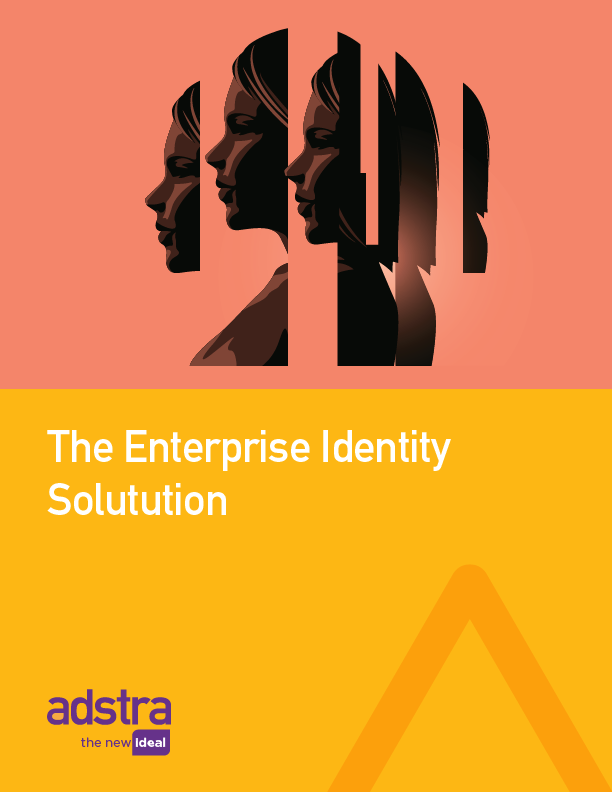AI's Crucial Role in Enhancing Identity Resolution for Marketing
By Andy Johnson
Chief Data Officer, Adstra

The incorporation of artificial intelligence (AI) in marketing has stirred up excitement, largely due to its capacity to facilitate creative personalization at scale and extract valuable insights from vast amounts of data. For the marketing use case, one of the most promising aspects of AI is predicting identity, which is to say – the person at the heart of personalization.
The hopes of AI-powered creative rest on identity, which is why we should explore with equal interests how AI will apply the process of identity resolution itself.
A Closer Look at Matching Algorithms
To grasp the prospective role of AI, one must first understand the intricacies of matching. Every match, even those classified as deterministic, is probabilistic as well. For a long time, conventional wisdom was that probabilistic matching provided scale but lost accuracy, while deterministic matching provided accuracy at the cost of scale. But remember people share logins, input incorrect info, or even move. The breakthrough of AI is that it eliminates any mutual exclusivity between accuracy and scale. AI-powered platforms function with varying variables and levels of confidence, indicating a continuum rather than a deterministic-probabilistic binary.
At the same time, essential processes such as data cleansing and deduplication occur concurrently with matching. These procedures are instrumental in ensuring data accuracy and removing redundancy, thereby enhancing the efficiency of identity resolution.
Applications of AI in Identity Resolution
Before we get into what’s possible with AI in identity resolution, it’s important to understand what’s needed to deliver any kind of strategic output. AI is an incredibly powerful technological development, but the value that AI can drive is a direct result of the data input, the scale of that data, and its relevance to the overall marketing effort.
These three critical pieces are what drives AI’s learning. If any of them are subpar, the value of the output is minimized, right off the bat. To capitalize on any of AI’s potential, brands need to ensure they are using high quality data to build their matches. They need the proper scale of data, and they need the data to be relevant to how the matches are going to be used in a campaign.
Armed with these three key factors, brands can then take advantage of:
Deduplication:
AI’s applications within identity resolution are far-reaching and promising. At the forefront is the ability of AI to address and reconcile conflicting data, which is a common challenge in identity resolution. By leveraging AI, organizations can streamline the process of identity consolidation and significantly reduce inaccuracies and inconsistencies in their customer data.
Enhancing Rules-Based Models:
Through understanding the impact of individual rules, AI can contribute to a more dynamic, data-driven approach to identity resolution. This could help organizations avoid the pitfalls of rigid, rules-based models and adapt more quickly to changes in customer behavior or data trends.
Matching Algorithms:
AI can enhance matching algorithms, making them more efficient and capable of handling more complex matching scenarios. It can also facilitate real-time identity resolution, a capability that is becoming increasingly important as organizations strive to interact with their customers in more immediate and personalized ways.
Cross-Channel Identification:
AI can support cross-channel identification. In today’s multi-channel world, customers interact with organizations through a variety of channels, both online and offline. AI can help piece together these disparate interactions and build a cohesive identity that spans across channels.
Security and Fraud Prevention:
AI can assist in anomaly detection, spotting unusual patterns of behavior that might indicate fraudulent activity. By identifying these anomalies, organizations can act swiftly to prevent fraud and protect their customers’ identities.
Cost Efficiency and Scalability:
All these applications come with the added advantage of cost-efficiency and scalability. As AI technologies become more sophisticated and affordable, organizations can leverage them to enhance their identity resolution efforts without significantly increasing their costs.
Better Probabilistic Models:
The use of AI can also refine probabilistic models used in identity resolution by identifying patterns and variables that are too complex or subtle for traditional algorithms to detect. These improved models can lead to more precise matches and, consequently, a more complete and accurate understanding of customer identities.
These applications of AI will be progressive. Initially, AI processes will likely operate alongside traditional methods, resulting in a hybrid model. As the technology matures, AI is expected to shoulder more of the identity resolution responsibilities.
The Intersection of AI and Identity: An Area of Great Potential and Risks
The union of AI and identity resolution reveals significant potential, particularly for AI-driven personalization in marketing AI-powered creativity holds the promise of new heights in marketing accuracy. Without robust identity resolution, it introduces new kinds of inaccuracy as well. Incorrect personalization due to poor identity resolution is a known risk, but incorrect personalization becomes even more problematic with the tremendous powers of artificial intelligence behind it.
This is where the role of AI in identity resolution becomes particularly crucial. The transformative potential of AI in marketing cannot be fully realized without a parallel transformation in identity resolution. The two go hand-in-hand.



